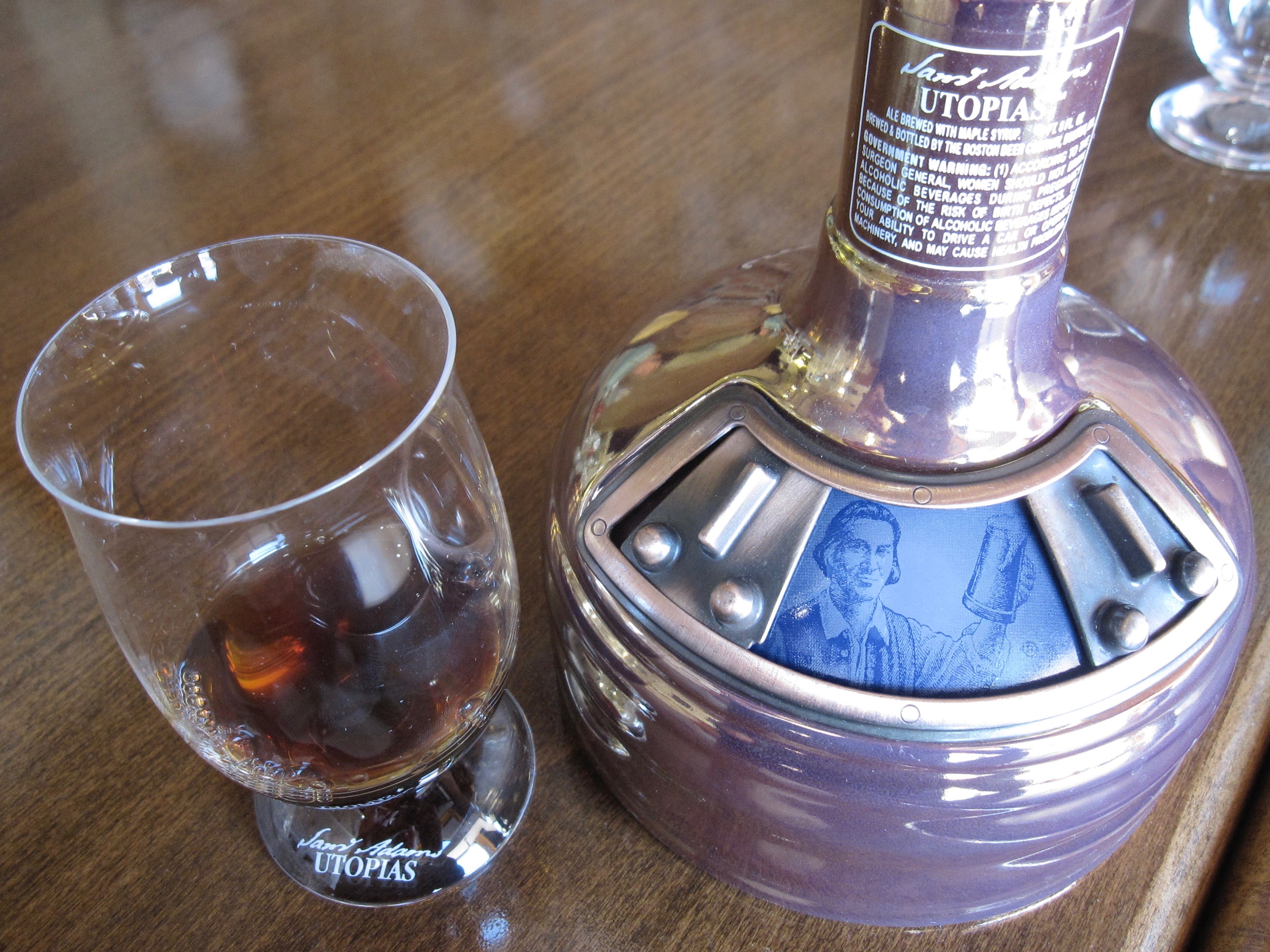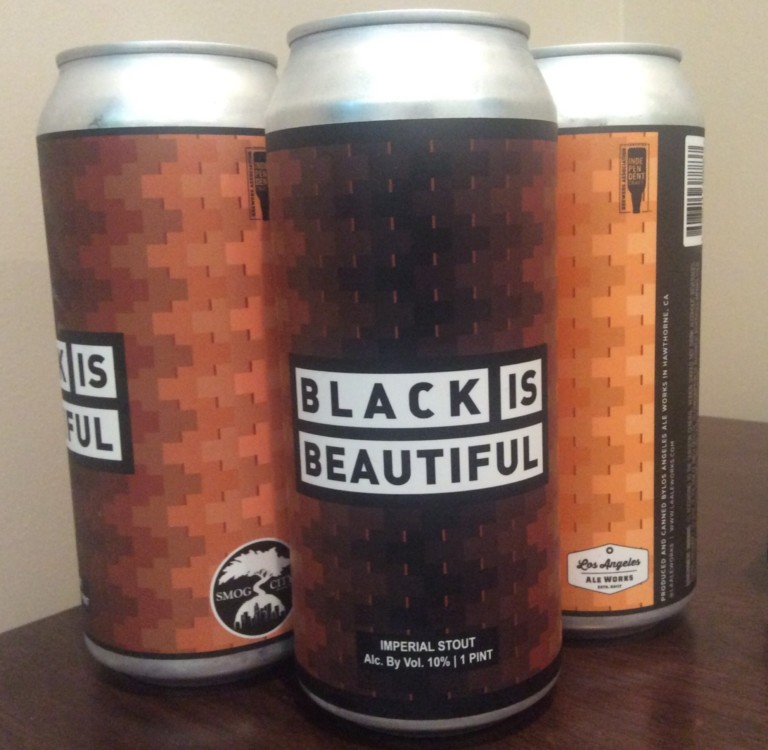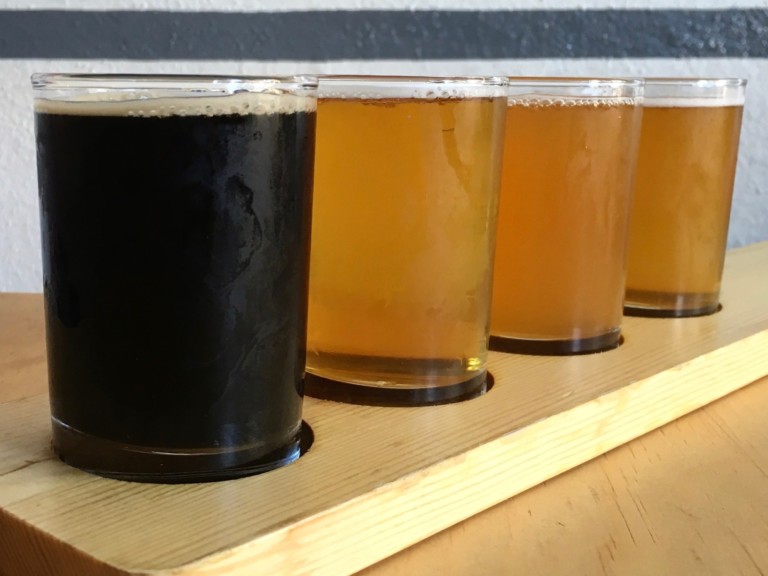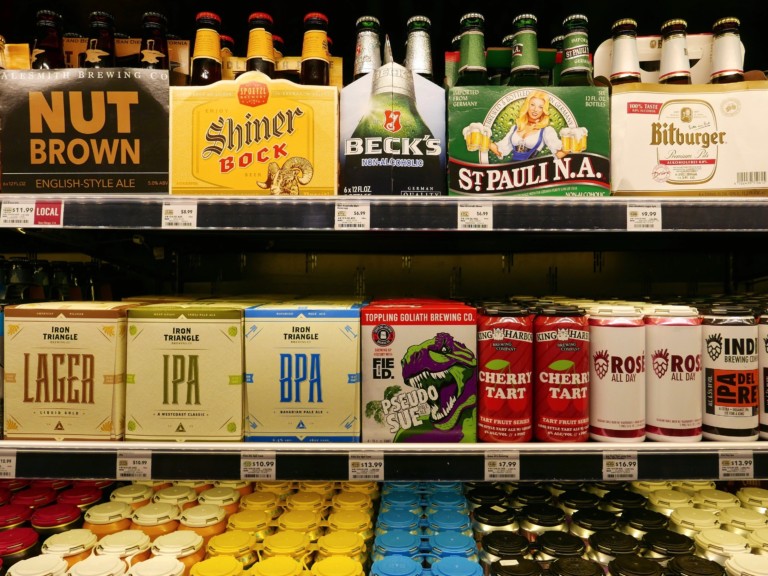Experimental Samuel Adams brewer Bert Boyce was in town from Boston to promote the release of Utopias, a monster barrel-aged beer that’s built in intensity since 2002. Utopias currently clocks 27% ABV, making it one of the most powerful beers ever produced. We met at The Golden State prior to an exclusive Samuel Adams dinner at Animal. Boyce discussed his extreme beer, which has a seriously limited release and sells for well over $150, if you can find it.
Josh Lurie: Where did the name Utopias come from?
Bert Boyce: The name was a creative mish mash. There’s no such thing as multiple utopias, so we came up with the unique name to illustrate what a unique product it is.
JL: How do you actually produce a 27% ABV beer?
BB: It’s a very long, incredibly difficult fermentation. A couple of us pretty much live at the brewery during fermentation. It requires monitoring yeast and a whole bunch of different stuff. Keeping the yeast happy is the most important thing, and we do use maple syrup as well. From Vermont and New Hampshire, Grade B maple syrup, so that helps as well.
JL: What is the actual limit of ABV that you can get beer to?
BB: We don’t know yet. We just work a little harder to beat the last release.
JL: So it’s a little stronger each year?
BB: It is.
JL: What’s your goal with Utopias as a brewer?
BB: We learn so much from monitoring the fermentation. We’re able to transfer some of that knowledge into other beers like our Imperial Series that are probably about 10% alcohol, but made in a more normal timeframe. So understanding fermentation is a huge goal as a geeky brewer thing, but really exploring what the limits of beer brewing are. You taste Utopias and you’re going to be surprised that this is indeed a beer. So just really push the limits and to get people to expand their concept of what beer can be.
JL: How has Utopias changed since you started brewing it?
BB: This is only my second release being involved with, so we’ve refined the barrel aging selection a little bit more. We’re using two different kinds of barrels from Portugal in addition to a lot of the other stuff. We’re using barrels that held Muscatel wine before, which is a really interesting, dark, raisiny, fruity, sweet dessert wine. So that contributed a pretty large round fruit character that we were looking for in this year’s release.
JL: How long do you ferment?
BB: It’s 18 months, but we blend in barrel stock going back to Triple Bock, so 1994. Our barrel room is chock full of old stuff, so our blending room is like a sherry solaris system. We’re always introducing old stuff to round out and mitigate the youth of this most recent year’s production. It’s a blend of really old and about 18 months.
JL: What are some of the hallmark characteristics of Utopias?
BB: I’ll pour some for you. It’s much easier to do it that way. Have you had it before?
JL: No I haven’t. What is this? [I point to a strange copper vessel.]
BB: This is a custom decanter we had made to mimic our brewhouse. That’s what our brew kettles look like…I’m curious to see what you think it tastes like. It’s easy for me to tell you what it tastes like.
JL: It smells really caramelly and rich. It does sort of taste like a dessert wine. It has that kind of sweetness to it. It clings to the glass too, so it’s got real viscosity.
BB: Absolutely. So because there are some similarities to port wine making and spirit production, you get some spirit-like character to it, from the port barrels, from the bourbon barrels, some of those tones. But we control the amount of residual sugar at the end of fermentation, so that’s what helps balance out the alcohol and helps to give it that viscosity and those legs. That’s one of the critical things: always refining that balance to keep the alcohol from being overwhelming, but also to keep it drinkable, light, not too heavy and sweet enough.
JL: What’s the suggested pour for a beer this strong?
BB: To taste…two ounces. And if you were eating it with something, nuts or cheese or smoking a cigar, clearly you’d have something to help balance it. Just drinking Utopias, two ounces is a full experience.
JL: What are some suggested pairings?
BB: You’re not going to find a whole lot of things that are gonna match it in intensity, so we look for things that support the character that’s already there. Nuts, cheese, honey, aged cheese…old hard cheese. It’s generally a dessert situation. Nothing too sweet either. If it’s too sweet, the sweetness of the Utopias tends to feel too much. Drier, simple, clean.
JL: Who originally conceived of Utopias?
BB: It was before my time, but it was Jim [Koch]. Utopias is a transition, going back to Triple Bock. We released Triple Bock in 1994, ’95 and ’97. We released Millennium in 2000, and then Utopias in 2002. Triple Bocks were all kind of similar, Millennium was a departure in the recipe, and then Utopias was a new recipe. Each time, we’re taking something we already know and changing it. If there’s something we want to do differently from Millennium, that’s how we end up with Utopias.
JL: What’s the next step with extreme brewing at Sam Adams?
BB: As far as extreme brewing goes, this is a constant work in progress. We just released Utopias and we’ve already been preparing and brewing the 2011. So we’re always trying to outdo ourselves as far as Utopias is concerned. It is our flagship of extreme beers.









Leave a Comment